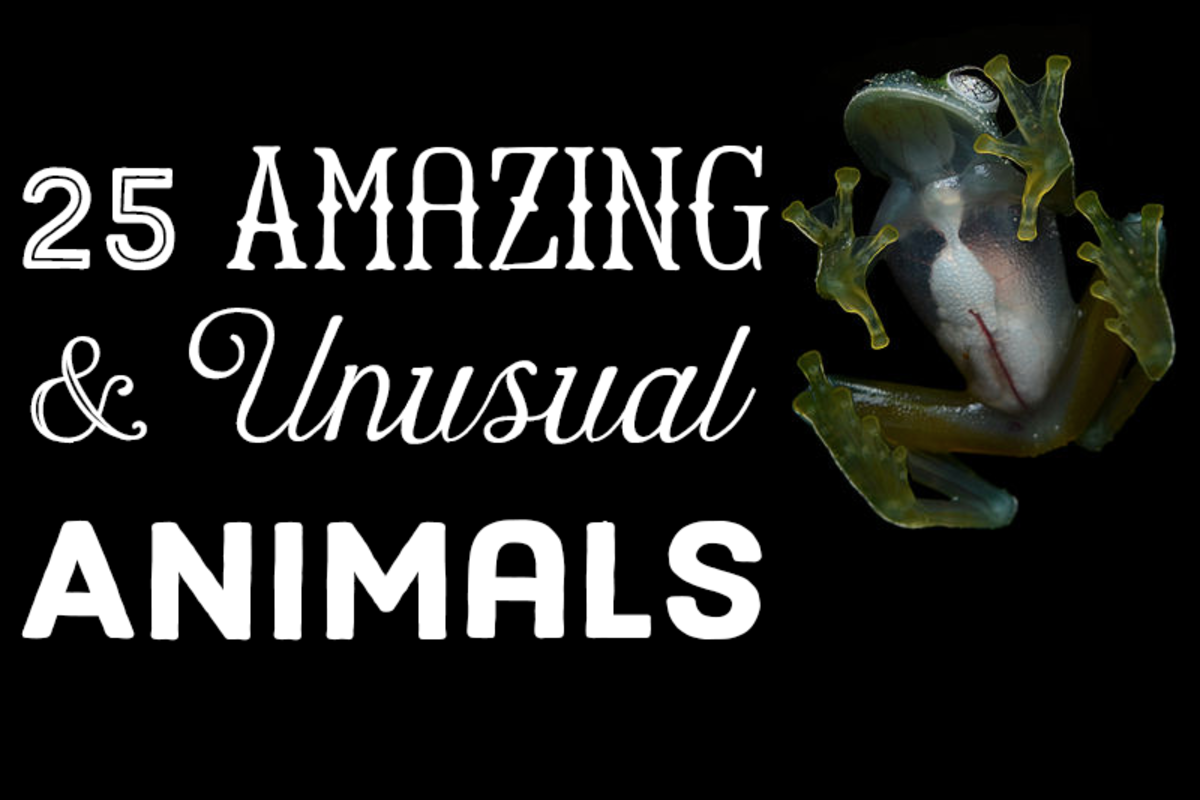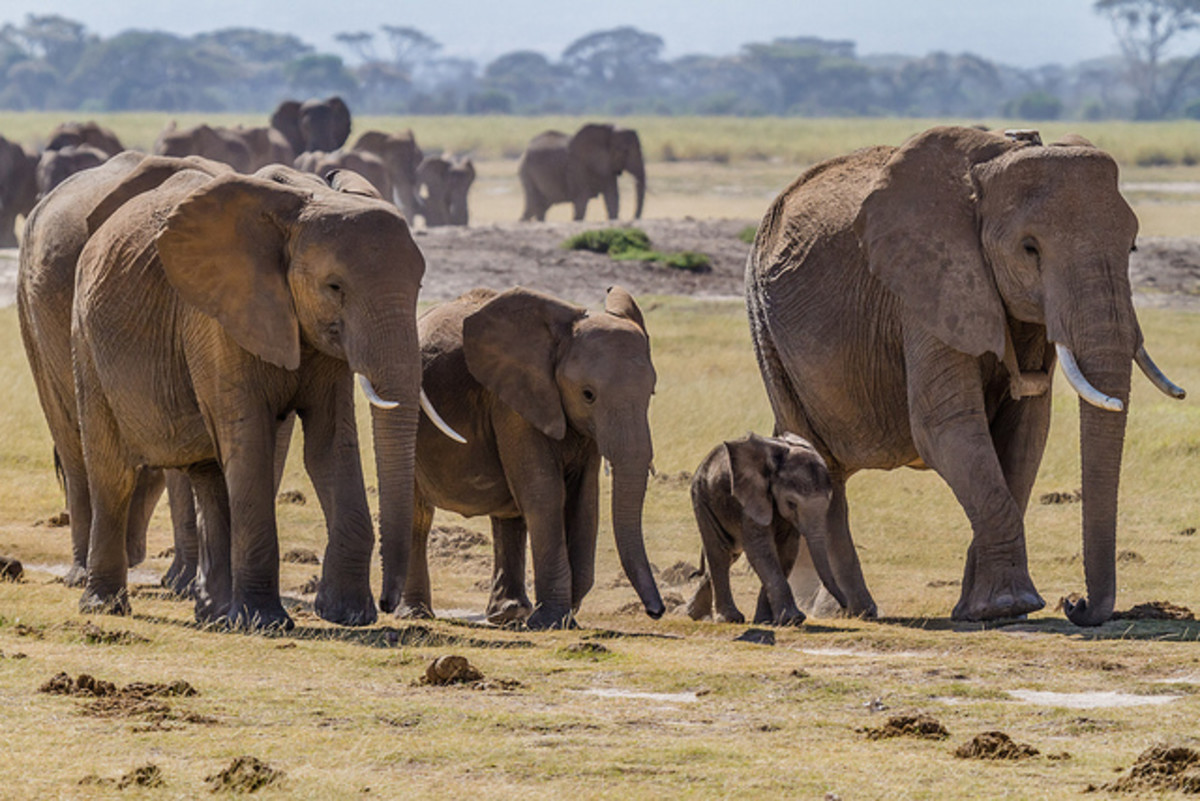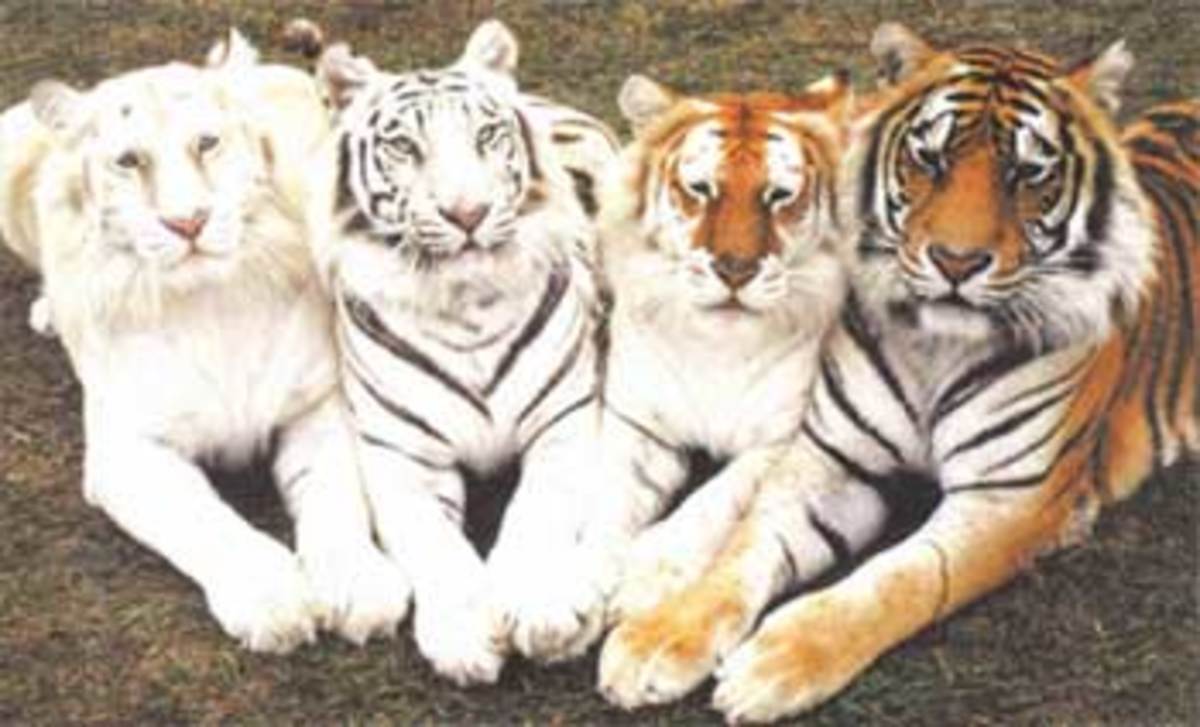How Smart are Elephants? Intellect, Social Life, and Emotions of the Largest Land Animals on Earth
Elephants Have Amazing Social Skills
What do human beings, dolphins, great apes and elephants have in common? As far as science has studied, these mammals are part of an exclusive group of animals who can recognize themselves in the mirror.
Scientists at The Wildlife Conservation Society in New York, Emory University, The Yerkes National Primate Research Center found an elephant can recognize themselves in front of a mirror. To the researchers, this confirmation was actually expected due to their amazing social skills these animals have displayed with other elephants. Scientists believe all of this is related to their empathetic abilities that enables them to distinguish themselves from others in their elephant community. Animal behaviorists have seen that dolphins, apes and people do have the ability to be empathetic.
The large collaborative study was done as part of a larger research project on cognitive and behavioral evolution.
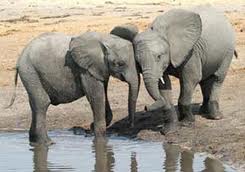
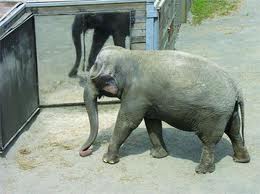

Elephants and their Own Image
Elephants have very large brains, have shown altruistic behavior, and social skills among others in its species. In the study, scientists put an extremely large mirror in the yard that housed 3 females from the Bronx Zoo in New York. The mirror was 8 feet high and 8 feet wide.
The researchers observed the elephants repetitively moving their body in front of the mirro. they also used their reflection to inspect themselves by looking inside their mouths, and looking at parts of their body that are usually not visible to them. Some other animals will try to interact socially to the image in the mirror, the elephants didn’t. Additionally, they didn’t erroneously think the image reflected back was another elephant. As another test, each elephant had a mark painted on its forehead in a place the elephant couldn’t see. One particular elephant noticed it in the mirror.
Elephants Cognitive Ability
Other studies have been done with elephants and mirrors, but this study done in 2006, was the first to use such a big mirror. The other mirrors were much smaller and kept out of the reach of the elephants. With this extra large mirror, the elephants could walk up to it, rub against it, touch it and even tried to look behind it.
Elephants have similar cognitive and social abilities to humans and it is connected to their higher intelligence and intiricate social systems of cooperation. Studies such as these suggest an evolutionary convergence that parallels human beings. (Evolutionary convergence is the same biological trait in unrelated species).
All the species who have been tested in front of a mirror, great apes, dolphins, and elephants are known for their higher intelligence level and elaborate social connectivity. All these species are believed to possess higher emotions in the form of altruism and empathy.
Elephants Communicate in Many Ways
Elephants are so smart:
- an elephant who has an itch that they can’t reach with their trunk, will get a stick long enough to reach the itch. They have also been known to pick up a branch with leaves and use it swat flys.
- Elephants will throw things at each other using their trunks, in play or in fights.
- Elephants have the ability to cooperate and work as a team
- Elephants intelligence level is on par with dolphins and chimps.
- Elephants have a complex social life.
- Elephants have an emotional attachment to each other.
Elephants live in matriarchial social groups, caring for each other and the young.
Elephants use several forms of communication through their body movements. They use their ears to flap, they use their legs to kick dust, they charge, and they toss their trunk to assume dominance, in play, to protect, for mating purposes and other forms of communication. Over 150 visual signals such as these have been documented by animal researchers. They have used almost every part of their body to communicate with each other.
A Male Who Wants to Mate
Submissive behavior and defensive behavior is shown when they back up, raise their tail, throw dust, swing their feet, arch their back, flatten their ears, and a variety of other movements too.They demonstrate dominance when they turn towatds another elephant and have their ears spread. They will stand tall, make expressive jerking head nodding, charge another elephant, and toss their trunk forward.
Elephants use many vocalizations to communicate with each other. They are known for their trumpeting sound, which is thought to mean they are excited. Elephants purr like vibration when they feel pleasure. When they are interacting with others they emit a soft moan and hiss when they feel uneasy.

Elephants Have an Olfactory Sense
Scent is also a form of communication among the elephants. Their trunks are constantly swinging and exploring their environment. They pick up particles they discover and use their olfactory sense to communicate. Male elephants go through a heightened sexual season once a year where there testosterone levels are higher, they exert more aggressive behavior and liquid is secreted from their temporal lobe glands located near their eyes and ears. This liquid signals a chemical response in other elephants. Through studying elephants, it is believed the elephant can change the pheromone when they want, and as they age. Elephants have billions of cells devoted to their olfactory sense.
The Joy of Elephant Babies
Observing the expression of elephants is easily recognized. Elephants have the capacity of deep thought and complex feelings and emotions. Animals may even have familial attachment similar to humans. They have shown anger, joy, love, grief, compassion, and a span of other profound emotions.
In the wild elephants readily show joy and happiness when they are socializing with other elephants. They play games, and greet other pachyderm with open displays of pleasure.
In a PBS special, called “Unforgettable Elephants”, elephants were filmed giving birth. It is a beautiful sight, as the baby calf is born and the other elephants scream with excitement and display visible signs of emotions can be seen from their temporal gland secretions. Their exuberance is very apparent, their excitement is palpable, and their celebratory nature makes the event a very festive one.
Elephants and Their Babies
People who have observed elephants with the birth of a baby calf can openly see their display of love they show their offspring.
Watch the Birth of a Baby Elephant
Western Africa Where African Elephants are From
Areas Asian Elephants inhabit
Reunions Are Joyous Elephant Events
Another highly emotional occasion in an elephant's life is an elephant reunion. This joyful meeting between related, but separated, elephants is one of exhuberance and drama. The greeting ceremony marks the incredible welcoming of a formerly absent family member. During the extraordinary event, the elephants about to be united begin calling each other from a quarter a mile away. As they get closer, their pace quickens.
Temporal lobes secrete more fluid down their faces. The elephants start running towards each other, their loud screams and trumpeting noises fill the air with true excitement. When they meet, their ears flap loudly, they click their tusks, and entwine trunks. They spin around, rub each other and appear totally delighted at their reunion. Their happiness is expressed by filling the air with rumbles, roars, screams and the musical trumpeting sounds from elephants who are expressing complete joy and happiness. Elephants live in a matriarchal society. The baby elephants are well protectedby the other female elephants. Should they perceive any danger, a strong reaction will be elicited from the entire herd. They have been known to go into a rage in order to guard their young.
Elephants Grieve, Mourn and are Altruistic
Elephants grieve and mourn. As an elephant goes past a place where a loved one died, they pause even for several minutes. They may touch the remains of the elephant, but don’t touch any other species, caressing, turning them, and smelling them, even years later. Researchers are not sure if they are grieving or recalling memories, or trying to recognize the remains, or figure out what happened. The one thing researchers believe is that they have a concept of death. Elephants who lose their calf go through a form of depression, they lag behind the rest of the herd for days. Family members will break off branches and drop grass clumps on the deceased. They have been seen standing watch and trying to feed older dying elephants. Through these incidents elephants have shown compassion, empathy, and altruism towards the members of their society.
An incident was observed when a herd moved slower than usual to allow another elephant who had a broken leg to keep up with the other members. A park ranger told a story of elephants all traveling slowly because one mother was carrying her dead calf and could move as fast as usual. An example of an elephant’s altruism was seen when an elephant attempted to save a baby rhino stuck in the mud. She continued to try to save another species, even though the mother rhinocerous kept charging at her. This may demonstrate that elephants do have the capacity to feel for others, not their own species. Complex emotions such as this, are a sign of intelligence.
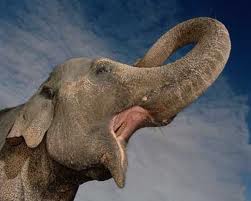
Animals Communicate at Lower Sounds than Humans Can Hear
Among other emotions elephants show is fear, anger and stress. Baby African elephants have been observed screaming after sleeping if they have witness the poaching of their family members, almost as though the elephant is suffering from PTSD(post traumatic stress disorder).
As elephants lose their habitat, their intelligence may be making them realize their situation, and stress has been observed in wild elephant populations.
Elephants are the largest land mammals on the planet. They have long lives, large brains and show an array of emotions within their complex social group. An elephant can recognize the varying sounds of other elephants from about a half a mile’s distance. Researchers are learning that elephants most likely communicate some of their sounds at a level lower than human beings can hear. Low frequency sounds can travel miles to convey messages, and may even help males find females for breeding.
Adult Elephants have no predators, except for humans. Baby elephants are vulnerable to being attacked by hyenas and lions. When an elephant senses a predator, they create sounds that make the rest of the herd clump together to guard the young.
elephant sense
| how well sense works
| notable info
|
|---|---|---|
eyesight
| moderate, they rely on other senses
| eyes are small in comparison to head
|
hearing
| can hear at high and low frequencies --- can accurately tell direction sound comes from
| can hear frequencies 20x lower than humans
|
touch
| tactile sense is very important
| help maintain social bonds
|
smell
| millions of receptor cells in trunk & 60% of their brain is devoted to smell
| sense of smell is several 100x better than any dog
|
brain
| largest brain of any mammal
| can remember and retrieve info related to all senses
|
Elephants Use Mating Calls
Elephants live in separate male and female societies. Females have a wider vocal range of sounds than males. 70% of the calls we hear are made by adult females, and the younger members of the herd.
When a male wants to breed, he “announces” his sexual identity, rank and desire to mate. He demonstrates a specific behavior to court the female by emitting a scent through his bodily fluids and by broadcasting his calls at a low sound frequency. The calls can travel over 2 miles. It also signals other males, the bulls, to keep away. The female also has specific behaviors for mating. The female will respond to the calls, and after mating has specific vocalizations, which may last up to half an hour.
Elephants maintain their social bonds with their trunks by caressing, smelling, and touching each other. Their trunks are an integral part of their communication. their tactile sense even gives them warnings of earthquakes. They can feel the seismic activity through the pads of their feet, or they may put their trunks on the ground to detect unusual movement.
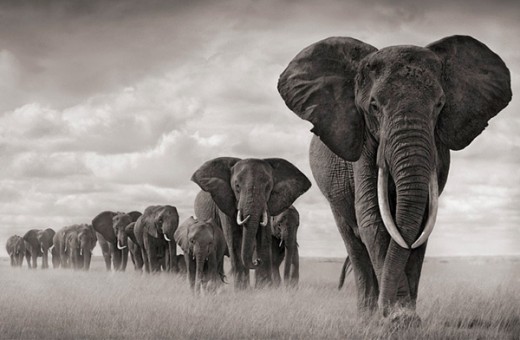
There is Much More to Learn About Elephants
Elephants also have an amazing ability to remain motionless all at the same time. It is called synchronized freezing. If they hear an unfamiliar sound, or sense an odor, or feel seismic activity, they use their sense of hearing and smell to focus on the disturbance. Male elephants put their trunks to the ground when they freeze Elephants amazing sense of smell allows them to keep track of where they are going as they put their trunks to the ground.
Elephants have an amazing ability to exchange information among their members. They have a high level of emotions, and deep bonds with each other. They honor the elder members of the herd, remember and recognize other elephants, and respect each other.
They protect their young, are affectionate with each other, and use their intellect to communicate and build a functioning society. The fascinating world of elephants has yet to yield much more undiscovered information about these highly intelligent and social animals.



